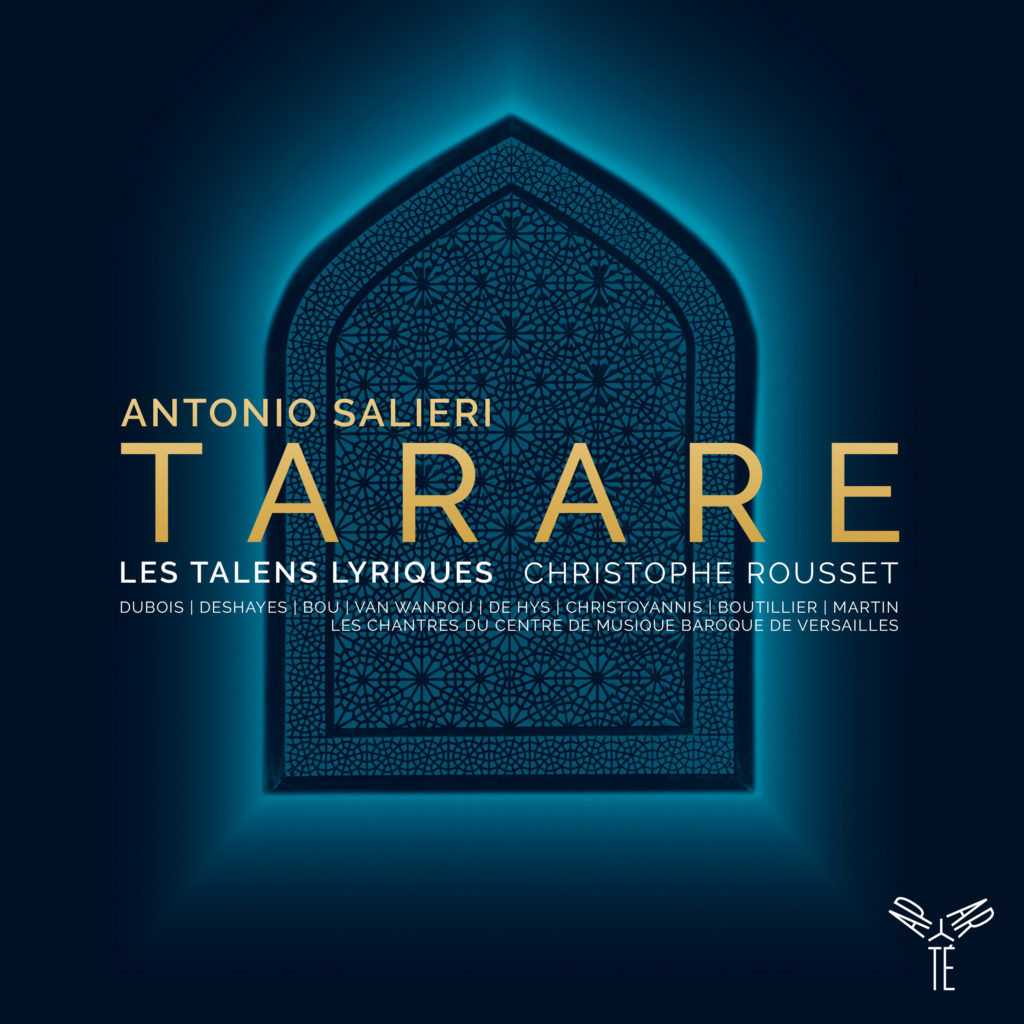 Релизы
Релизы
Thanks to Amadeus and Rimsky-Korsakov’s opera, Salieri’s name is familiar to the general audience, even if his music is not popular nowadays. Vocal and instrumental ensemble Les Talens Lyriques (conducted by Olivier Schneebeli) and the choir Les Chantres du Centre de Musique Baroque de Versailles (managed by Christophe Rousset) has started a series of three French operas of Salieri, releasing Les Danaides in 2013, Les Horaces in 2016 and Tarare in June, 2019 by Aparté. During Salieri’s life Tarare was considered a pinnacle of his opera skills, bringing the composer glory and triumph in France and abroad.
The plot takes the audience to the days of Ancient Persia. It is ruled by Sultan Atar (Jean-Sébastian Bou). His heart is filled with envy for the captain of sultan’s army Tarare (Cyrille Dubois), for his popularity, well-being and luck. By order of Atar, General Altamort (Philippe-Nicolas Martin) kidnaps Tarare’s wife, Astasia (Karine Deshayes) and takes her to Atar’s harem under the name of Irisa. Tarare will have to free his wife with the help of the loyal chief eunuch Calpigi (Enguerrand de Hys) and deal with the affairs of the chief priest Arthenée (Tassis Christoyannis). The opera is also preceded by a prologue, where gods of the elements, Nature and Fire, create people and give them qualities and social status. At the end of the opera, gods appear again to voice the moral: it’s not the position in society, but ethics that should define an individual.
The libretto intricately mixes genres of comedy, drama, salvation opera and allegorical representation. In this regard, Tarare is at the peak of its fashion influences, as since the time of Glück composers have abandoned the rigid bonds of opera seria and opera buffa. The plot however is filled with of comedic clichés, some of them appropriate, some not: from cross-dressing to one character pretending to be another. It is possible that Beaumarchais did not deny himself the pleasure of mocking his own early plays, including the Wedding of Figaro.
The comparison with Mozart is inevitable, not only since they were writing at the same time, but also because of the styles similarities. One could easily see the assertive intonation of the Night Queen in the “anger” aria of Astasia “Oh death, end my suffering!”And the agitated, passionate tone of the prologue perhaps anticipates Beethoven’s romantic overtures “Egmont” and “Coriolan”. Let’s not forget that Salieri had given the young Beethoven lessons on how to write opera scenes!
Overall Tarare uses a standard orchestra from the late Haydn and Mozart. Only in during the janissary march the so-called “barbaric” set of percussion instruments is added, usually represented by the bass drum and cymbals (it can also be found in Mozart’s Abduction from Seraglio). Among the best orchestral bits of Tarare are Calpigi’s ballad, where strings artfully simulate mandolin sound through pizzicato, and the funeral march from the fifth act, where the wind instruments are heard behind the stage without strings supporting them, as if from the grave.
A special praise goes to Tarare’s performer, Cyrille Dubois, for the thorough reconstruction of the typical Baroque tenor timbre, closer to the contratenor or altino, and his wonderful sustained notes in the middle register.
In contrast, Jean-Sébastien Bou’s interpretation weighs heavily on colorization and different shades of his character. He conveys the dual nature of Atar so well, especially at the end of the first act where Atar “gently” follow Tarare’s ship, only to explode with rage afterwards.
The repertoire of Les Talens Lyriques consists mostly of French Baroque and classical music, so the orchestra plays in a Baroque manner, with lower pitch and non vibrato, “objective” sound, despite the fact that Tarare was created in the late 18th century. With the exception of a few kicks made by French horns in the fifth act’s crowd scenes, the orchestra conducted by Schneebeli plays smoothly and convincingly, in the vein of authentic traditions.
To sum everything above, Tarare deserves the attention of any listener who is interested in 18th century opera. It’s not the masterpiece that more famous operas are, but it’s up there.